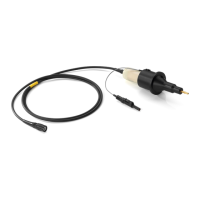Protocol Analysis
R&S
®
Scope Rider RTH
204User Manual 1326.1578.02 ─ 12
Each message has a priority which is implied in the identifer value - the lower the
value, the higher the priority. A dominant bit from the message with highest priority
overwrites the recessive bits on the bus. If a node detects that the bus is already
receiving a message that has a higher priority, it stops the transmission and waits for
the current transmission to end before retransmitting.
Frame types
The CAN/CAN FD protocol defines the following types of frames:
●
Data: used for information transmission.
●
Remote: used for information request. The destination node sends this frame to the
source to request data. This type of frame is only used by CAN.
●
Error: indicates that a bus node has detected transmission error.
●
Overload: used from a bus node to request a transmission delay.
CAN data message format
The CAN protocol defines two formats for the data frame: the base frame format and
the extended frame format. The data frames are built as follows:
Figure 9-23: CAN basic frame
Figure 9-24: CAN extended frame
The following fields, compose the base/extended frame format:
●
SOF: start of frame. 1 dominant bit that marks the beginning of the message.
●
Identifier: 11/18-bit identifier. Contains information about the priority of the mes-
sage. CAN base frames have an 11-bit identifier while CAN extended frames have
a total of 29 bits identifier.
●
RTR: remote transmission request bit. Differentiates between base and extended
frames. It is dominant for base data frames and recessive for extended data
frames.
●
SRR: substitute remote request. Only present in extended CAN frames at the posi-
tion of the RTR bit in base frames.
●
IDE: identifier extension bit. It helps to distinguish between a base and extended
data frame. It is dominant for data frames and recessive for remote frames
●
r0/r1: reserved bits for possible future use.
●
DLC: data length code. Defines how many bytes of data follow.
CAN and CAN FD (Options R&S
RTH-K3, R&S RTH-K9)

